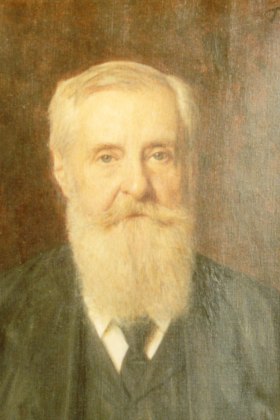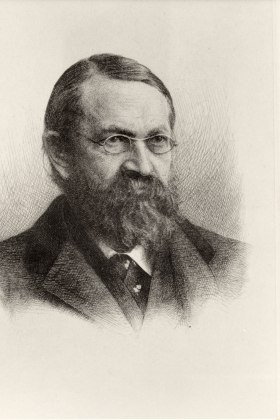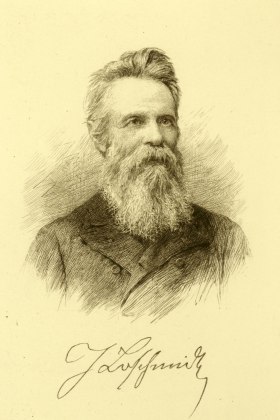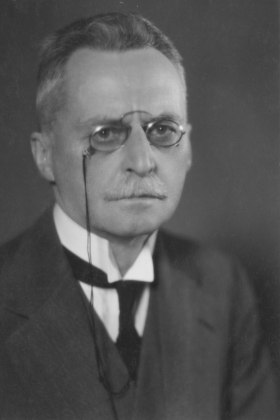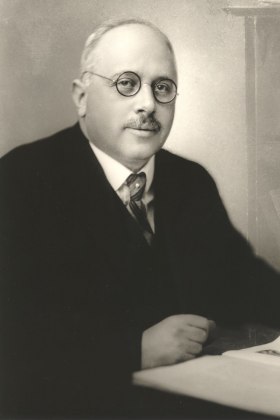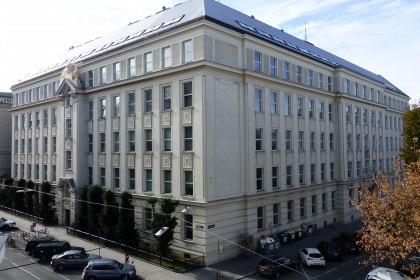Physics in Vienna in the 19th century
1850 to 1910: No other period of physics in Vienna saw such a concentration of prominent physics research and renowned teachers and scientists. In a desolate rented house, Ludwig Boltzmann and Franz Exner taught people such as two later Nobel Prize laureates – Victor F. Hess and Erwin Schrödinger – as well as a woman who did not receive this honor, Lise Meitner. Physics in Austria is often identified in the scientific world with accomplishments in research in the 19th century. Thun-Hohenstein’s reform of 1850 created the conditions for a flourishing of the natural sciences. Christian Doppler’s appointment as director of a new institute in 1850 was the first step to enabling a young generation of academics to overcome their former provinciality and to reach the level of international developments. Mechanics, thermodynamics, statistical physics, electrodynamics, crystalline physics, color theory, and from 1900 radioactivity research, are all closely connected to research done in Vienna by people such as Doppler, Stefan, Loschmidt, Lang, Boltzmann, Exner, Meyer, and Hasenöhrl.
Physics in the suburbs
In a short period before and after the March revolution of 1848, the study and education reforms by Thun-Hohenstein set the renewal of physics at Austrian universities into motion. Freedom of teaching and learning and the combination of teaching and research were the pillars of professional and disciplinary innovations. The reform of the university, educational, and scientific system became evident through societal changes: the growing importance of industrial means of production and the necessity of improved education in natural sciences that came with it, especially in light of international competition.
From 1850 onwards, the advancement of natural sciences and particularly of physics did not follow an internal autochthonous dynamic, but was steered by political and economic demands for the modernization of old structures in education. Until that point, practical experimental training had largely been neglected since it had not been in line with the economic and educational goals, and was now strengthened by the reform. This especially had an effect on teacher training for the subject of physics at high schools, since practical exercises in class were a main goal of this reform.
With the newly founded Physical Institute in 1850, the era of “modern” physics began at the University of Vienna. Experimental physicist Christian Doppler was appointed as its director and as a professor. Doppler put all his energy – unfortunately decreasing rapidly due to a severe lung disease – into setting up the institute in a rented house at Landstraße 104 in Vienna’s suburb Erdberg. The institute was well outfitted with an assistant, a laboratory technician, a mechanic and six grants for 30 guilders each per semester. Due to his illness, Doppler had to pass on the directorship to Andreas von Ettingshausen in 1852, who supplemented the instrument collection with new machines. Nevertheless, the institute was not well enough equipped for long-lasting support of physical research. From 1863 Josef Stefan worked at the institute, and Victor von Lang, Ludwig Boltzmann and Ernst Mach joined it as young lecturers. Josef Stefan took over the institute’s directorship in 1866. Lang, occupant of the first chair, held a two-semester-long lecture on experimental physics and dedicated himself to crystalline physics. With his work on optical, magnetic, thermal, and mechanic characteristics of crystals, he is the father of this field of research. Particularly Lang’s far-reaching personal contacts to researchers in all of Europe are worth mentioning, especially when compared to Stefan and Loschmidt, who completely neglected international contacts.
1868 and the following years marked both institutional improvements and geographical changes. Josef Loschmidt was named associate professor of physics in 1868 and three years later became full professor at the newly founded “Physical-Chemical University Laboratory”, dedicated to “chemical physics”. Here, mainly photographic and electrochemical research was undertaken. The establishment of this third chair for physics was a result of the realization that the border between physics and chemistry, which had gained importance through the industrial developments, had to be supported.
The period between 1850 and 1875 was one of the most fruitful in the history of “modern” physics in Austria, which was mainly focused on theoretical physics due to the lack of both space and equipment. Stefan’s achievements were almost all in the field of theoretical physics and his name is connected to the Stefan-Boltzmann-law, which for the first time allowed an estimate of the sun’s surface temperature. He was one of the first people on mainland Europe who helped the Maxwell theory reach broad acceptance. Furthermore, he also led his student Boltzmann to the molecular theory of gases. With his theoretical estimate of the diameter of air molecules based on the kinetic theory of gases, Loschmidt found a clue to the atomic structure of matter. In 1861, Loschmidt managed to discover the structure of aromatic chemical compounds, even before the German chemist August Kekulé, even though Kekulé is still considered the “discoverer” of the benzene ring – for its formulation, however, Loschmidt is credited.
Physics in a constant provisional arrangement
In 1875 the physics institutes were moved to a rented house at Türkenstraße 3 in Vienna’s 9th district (Alsergrund), a measure for which the term “provisional arrangement” is a euphemism, since this house was not at all suited to be an institute building – in regard to space as well as due to its desolate structure. It is one of this country’s oddities that so many big names studied, taught or carried out research in this derelict building between 1875 and 1913: Josef Loschmidt, Josef Stefan, Ludwig Boltzmann, Franz S. Exner, Stefan Meyer, Egon von Schweidler, Friedrich Hasenöhrl, Paul Ehrenfest, Felix Ehrenhaft, Lise Meitner, Victor F. Hess, Fritz Kohlrausch, Hans Benndorf, Hans Thirring and Erwin Schrödinger. Repeatedly, the professors pointed out the desolate state of the institute at Türkenstraße and demanded a new building – in 1904, after 30 years in this “provisional” location, their wish was finally granted.
In 1894, Boltzmann returned to Vienna from Munich as Stefan’s successor and became professor and institute director. He moved the institute’s focus towards theoretical physics. The erratic Boltzmann only stayed in Vienna for a short time, and went to Leipzig in 1900, from where he again returned to Vienna two years later – this time for good.
Franz S. Exner took over the third chair in 1891 and received the responsibility for the practical education and the tasks of the Institute of Physics (second chair) in 1894/95. Exner’s scientific, science-political and organizational accomplishments can only briefly be outlined here. The spectrum of his scientific work and its influence on the students, his organizational skills that prominently manifested themselves in the conception of a new building for the physical institutes at Boltzmanngasse/Strudlhofgasse and the sum of all his activities make it possible to speak of an “Exner era”. This era continued to have an influence long after his active time was over, because his students took over a majority of the professorships and associate professorships in Austrian universities (within its borders before 1918). (His students can be found at the following universities: 11 in Vienna, 4 in Brno, 3 in Graz, 3 in Innsbruck, 2 in Prague, 1 in Czernowitz, 1 in Cracow; Meitner is not included in this list). Exner’s research encompassed four areas of physics: electrochemistry, atmospheric electricity, spectral analysis, and color theory. From 1899 onwards the research program was expanded to include radioactivity research with his students Stefan Meyer and Egon von Schweidler. Schrödinger’s contribution to color theory (colorimetry) and the discovery of cosmic radiation in 1911/12 by Victor F. Hess are (in)direct results of Exner’s broad scientific interests. His epistemological thoughts on the statistical character of natural phenomena and the laws of nature, which Schrödinger often referenced in connection to questions of interpreting quantum theory, are still actively discussed today.
In 1897 women were finally allowed to join the Philosophical Faculty of the University of Vienna. Olga Steindler, later the wife of Felix Ehrenhaft, was the first woman to obtain her doctorate in physics as a main subject in 1903; the second woman to receive a doctorate in this subject was Lise Meitner in 1906. Meitner worked together with Selma Freud, who was the third woman to obtain a doctorate in physics at the Second Physical Institute under Exner.
In the course of Boltzmann’s return to Vienna in 1902, Exner and Lang suggested a reorganization of the institutes: The old cabinet lost its old name and became the First Physical Institute; the Physical Institute became the Institute of Theoretical Physics. The former Loschmidt Institute became the Second Physical Institute, which now was responsible for the lectures in the main subject of physics and in pharmaceutics. Due to the reorganization in 1902 the organizational framework for physics at the University of Vienna was set in stone for the next twenty years.
With Boltzmann’s tragic death in Duino in 1906 and Lang’s retirement in 1909 a first long and fruitful era of physics at the University of Vienna ended.
-
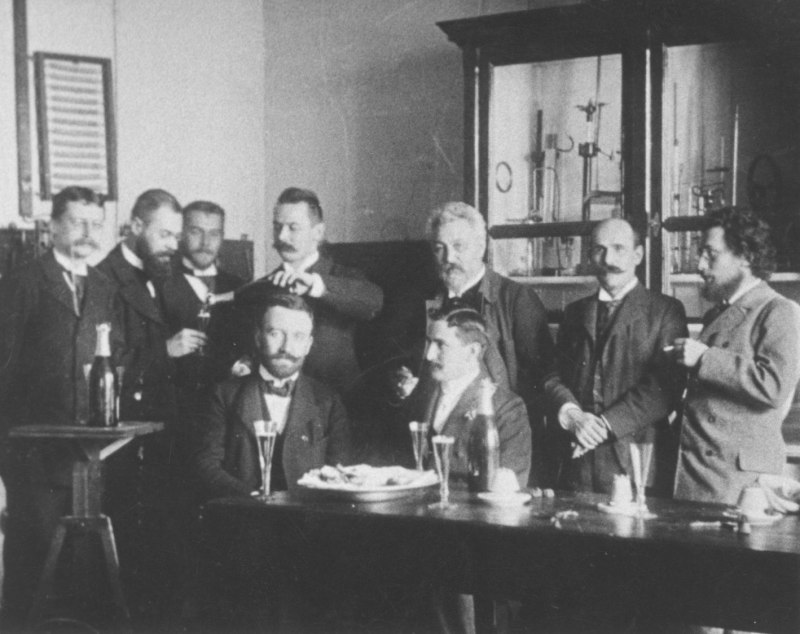
Franz Exner jun. (1849–1926) among his students
hinten stehend (v.l.n.r.): Egon Schweidler , Hans Benndorf, Felix Exner , Gustav Jäger, Franz S. Exner (5. von links), Cäsar Pomeranz, Anton Lampa,...
-
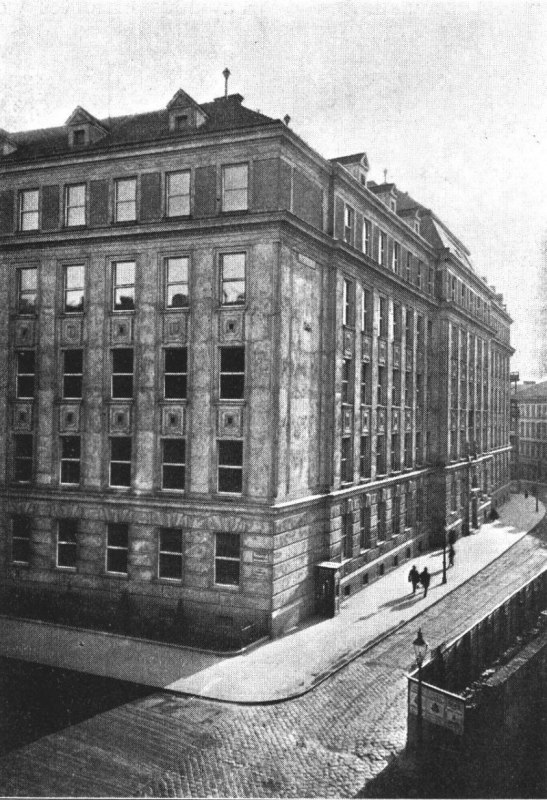
1912 Physikalische Institute, Wien 9., Boltzmanngasse/Strudlhofgasse, Aussenansicht
-

1912 Physikalische Institute, Wien 9., Boltzmanngasse/Strudlhofgasse, Hofansicht
Zuletzt aktualisiert am : 05.03.2024 - 21:28
-
Vom Doppler-Effekt zum Global Positioning System
1842–21. Jhdt. -
Statistische Mechanik. Entropie und Atome
1872–21. Jhdt.
-
Christian Doppler
-
Andreas Ritter von Ettingshausen
-
Josef Stefan
-
Viktor (Victor) Edler von Lang
-
Ludwig Boltzmann
-
Ernst Mach
-
Josef Loschmidt
-
Franz Serafin Exner jun.
-
Stefan Meyer
-
Egon Schweidler
-
Fritz Hasenöhrl
-
Paul Ehrenfest
-
Felix Ehrenhaft
-
Lise Meitner
-
Viktor Franz Hess (Heß)
-
Hans Thirring
-
Erwin Schrödinger
-
Olga Steindler-Ehrenhaft







